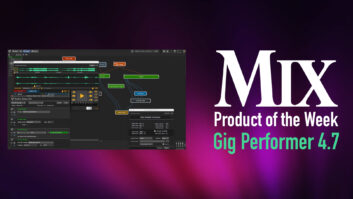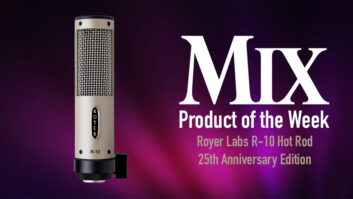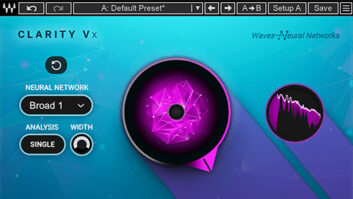I’m extremely comfortable and confident recording guitar parts in the studio. The same is true with bass and several other stringed instruments. Keyboards, however, are a different story. You could say that I’m all dressed up with no place to go, as I have access to numerous great virtual instruments, yet I’m basically useless as a keyboardist. I’m only good enough to record simple parts like pads and bass lines, and I usually have to edit them heavily after the fact.
With my ineptness as a keyboardist in mind, I was intrigued when I stumbled upon a MIDI plug-in from the German developer FeelYourSound.com, called ChordPotion. It lets you take simple MIDI chord patterns and turn them into more complex keyboard parts. You can apply the effect in real-time or record the chords first and then apply it.
I started by downloading the demo. I opened it in Logic Pro X and was near-instantly creating cool-sounding parts I could never have played on my own.
Read more Product of the Week: LiquidSonics Lustrous Plates.
ChordPotion, available for Mac and Windows, comes in VST and AU versions, although according to the developer, the AU version only works in Logic. For other Mac DAWs, you have to use the VST version. There’s no AAX version of the plug-in, so you can’t use it with Pro Tools.
Because it’s a MIDI plug-in, it’s complicated to configure as such in certain DAWs. However, there is a workaround, as long as you’re using a DAW that supports VST. The VST version of ChordPotion has a built-in piano module. So you can open the plug-in as an instrument, create your pattern using the piano sound, and then export your creation to another instrument track by dragging-and-dropping the MIDI data.
The heart of ChordPotion’s GUI consists of four independent “Rows,” each of which features a pull-down menu that affects different parts of the chord. The top Row impacts the top note and can produce simple melodies and arpeggios. The next one affects all the notes in the chord. The third one is for the bass note. The final one, “Extra,” gives you a second parameter for the top note. Each features a pull-down menu containing dozens of different patterns you can select. Some are genre-specific—for EDM and hip-hop—and others more generic. You can use all four rows simultaneously, or fewer if you prefer.
To test out ChordPotion, I recorded a couple of measures of chords and looped them, and then started experimenting with the various settings. In addition to choosing a pattern for each of the four Rows, you can adjust velocity, octave, repeats and speed for each. ChordPotion records the MIDI data of whatever’s playing through it, and you can use the MIDI button to drag and drop your creation onto a MIDI track. When you’ve used one of the randomization effects, pressing the “Generate” button creates new and different output under the MIDI button.
You also get controls for changing the feel to a shuffle (“Tripletize”) and even adding some randomizing effects. You can globally change octaves and add swing. One of my favorite features is that there are 12 “Pages,” which are carbon copies of the GUI that can each have their own settings; only one is active at a time. You can easily switch between the Pages in real-time by pushing a corresponding button.
With ChordPotion, an inept keyboardist like myself can create usable MIDI parts. Even if you’re a good player, you can use the plug-in for idea generation and inspiration. Check out this video to see it in action.







